Contact :
Brighid’s Cross (Imbolc, Candlemas)
About Imbolc, Brighid’s festival
A festival dedicated to creativity, fertility and protection
Imbolc honors Irish goddess Brighid (also Brigid, Brigit, Brigantia, etc.), the goddess of poetry, smithcraft and crafts, and healing. She is also the goddess of fire: the flame she carries and protects is the fire of creativity. She is known as the goddess of fertility, and is said to lean over every cradle, thus bringing protection and good health to newborn children. Last but not least, she also embodies wisdom, especially when it is gained through inspiration.
What is Brighid’s Cross?
To celebrate Imbolc, this special spread calls on the energies brought by Brighid in order to reveal what they bring to the querent. To do so, it is shaped as Brighid’s Cross, which is one of the main symbols used at this time of the year. Usually made of straw, Brighid’s Cross is traditionally crafted at the time of the sabbat and included in the rituals and celebrations, thus inviting the goddess to bring her blessings, protection and healing energies to those who display this item. In this spread, each part of the Cross alludes to one of her several aspects. This allows a large overview of what she blesses the querent with at Imbolc.
Object
This spread aims at giving the querent an overview of what Brighid brings to them at Imbolc, thus putting into light in what way she will help them in their personal evolution and in meeting success in their projects and aspirations.
How to proceed
After shuffling and cutting the deck, draw twenty-one cards and lay them as follows:
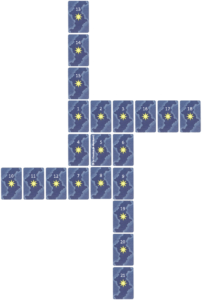
Interpretation
This spread can be divided into two main parts: the central knot and the four branches of the Cross. The reader starts with the nine cards in the center and continues with the branches, each one of them alluding to one of the main aspects of Brighid.
First part: the central knot
On three lines, cards 1 to 9 describe what is offered to the querent by the goddess at Imbolc and the kind of protection they get.
Cards 1, 2 and 3 thus define the kind of energy Brighid gives them.
Cards 4, 5 and 6 show the stability she will help them build.
Cards 7, 8 and 9 underline the protection offered to them by the goddess and that will be with them throughout the phases put into light in the branches of the Cross.
Second part: the branches of the Cross
The four branches of the Cross show what is in movement within the querent or around them, what is awakening deep inside of them and stimulates them. The several aspects displayed here are related to four of the main characteristics of the goddess.
The first branch: Brighid’s fire (cards 10, 11, 12)
These cards describe the creative energy that stimulates the querent. They reveal their potentials and show their chances to succeed in their projects.
The second branch: poetry and inspiration (cards 13, 14, 15)
These cards allude to poetry and inspiration. Consequently, this branch reveals the nature of the inspiration that stimulates the querent, as well as their capacity to use the language in a subtle way, their sense of eloquence and their ability to put their intentions into words. These cards not only show the nature of the inspiration, they also reveal how the querent can bring this inspiration to the tangible world by using their ability to shape ideas into words.
The third branch: wisdom (cards 16,17, 18)
These cards show the wisdom the querent will need, and the wisdom Brighid will help them to gain. They can also show what they will learn throughout their personal evolution and the development of their projects.
The fourth branch: the forge (cards 19, 20, 21)
The cards in this branch reveal the decisions the querent will have to make and the actions they will have to take to get their projects to succeed. The forge is the area of crafts, where the querent will find the tools that will help them to build their projects and to bring them into being.
Further remarks
Though it is made of twenty-one cards, this spread is not difficult to read, for it is composed of several groups of three cards each. The most difficult part consists in finding connections between each part of the spread, but they usually appear naturally.
The cards are read by groups of three and no specific position is attributed to any of them. Thus, they can either be read together as if they were telling a story or were showing the evolution of a situation, or individually. If they are read individually, they are to be taken as a succession of pieces of advice or warnings. They will thus describe what the querent need to pay attention to if they want to be successful in their undertakings.
Which decks for this spread?
This spread can be done either with a tarot or with an oracle deck (but not Lenormand decks because they use their own system). However, given what it refers to, Celtic-themed decks will be perfect, especially if they depict gods and heroes. Decks with a Neo-Pagan approach are also appropriate, for they will probably contain Imbolc related illustrations and symbols. In the same way, decks presenting mythical creatures such as dragons and phoenixes (or any other creature associated with this sabbat) will be great tools too! For instance, I recommend the wonderful Celtic Dragon Tarot by Lisa Hunt and D.J. Conway, for it displays dragons in the Celtic world, which is perfect for Imbolc!
(© Morrigann Moonshadow, February 1st, 2016; trans. February 4th, 2016. Further reproduction prohibited.)
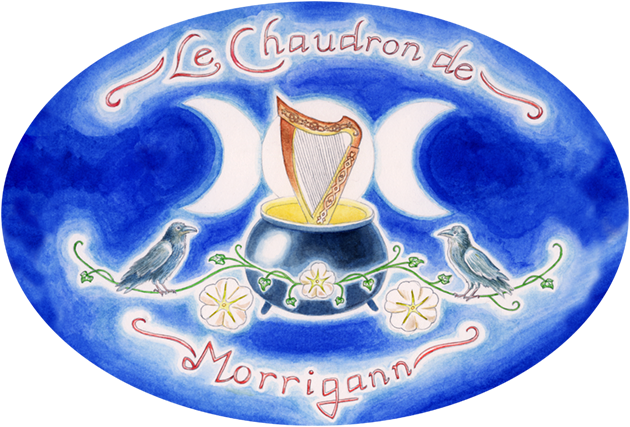
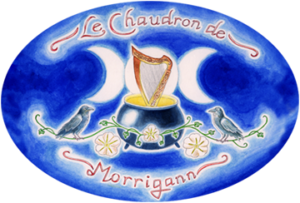
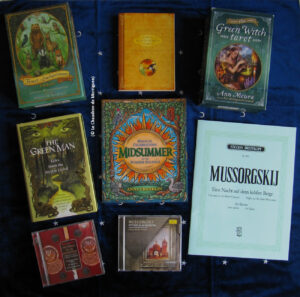
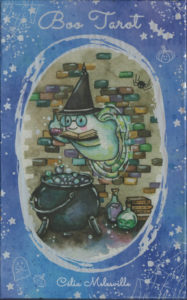
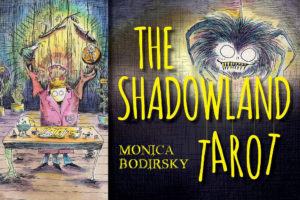
Good evening! I wanted to say thank you for your spread. We used it tonight with our tarot group — 21 cards was intimidating at first, but reading it as seven groups of 3 cards was much less so. Great spread!
Good evening!
Thank you so much for your visit and for your message. I am very happy you enjoyed this spread!
Have a blessed Imbolc!
Morrigann